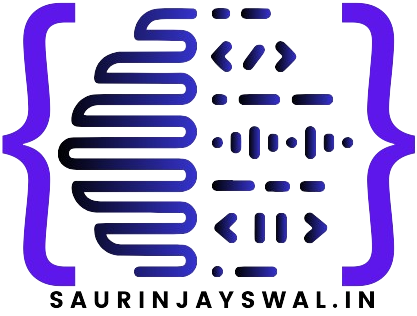Introduction
Welcome to our comprehensive Entity Framework Core 6 tutorial. In the realm of data access in .NET development, Entity Framework Core stands out as a powerful and versatile ORM (Object-Relational Mapping) framework. With the release of Entity Framework Core 6, developers are presented with a host of new features, improvements, and performance enhancements. In this comprehensive guide, we’ll delve into the world of Entity Framework Core 6, exploring its key features, best practices, and how to leverage its capabilities to streamline data access and enhance application development.
Understanding Entity Framework Core 6
Entity Framework Core 6 is the latest iteration of Microsoft’s open-source, cross-platform ORM framework, designed to simplify data access in .NET applications. It provides a high-level abstraction over the underlying database, allowing developers to work with database entities using familiar object-oriented programming techniques. Key features of Entity Framework Core 6 include:
- Improved Performance: Entity Framework Core 6 introduces several performance improvements, including faster query execution, reduced memory consumption, and optimized change tracking. These enhancements result in faster application startup times and improved overall performance for data-intensive applications.
- Migrations: Migrations enable developers to evolve the database schema over time in a controlled and automated manner. With Entity Framework Core 6, migrations are easier to work with, thanks to enhancements such as explicit migrations, schema validation, and migration scripts.
- Query Improvements: Entity Framework Core 6 introduces several enhancements to query execution, including support for compiled queries, query plan caching, and better translation of LINQ queries to SQL. These improvements result in more efficient query execution and better performance for data retrieval operations.
- Global Query Filters: Global query filters allow developers to define filter conditions that apply to all queries executed against a particular entity type. This feature is particularly useful for implementing soft delete functionality, row-level security, or multi-tenancy in multi-user applications.
- Logging and Diagnostics: Entity Framework Core 6 provides improved logging and diagnostics capabilities, allowing developers to easily monitor and troubleshoot data access operations. Built-in logging features include support for different log levels, structured logging, and integration with popular logging frameworks like Serilog.
- Integration with .NET 6: Entity Framework Core 6 is tightly integrated with .NET 6, the latest version of the .NET platform. This integration enables developers to take advantage of new features and performance improvements introduced in .NET 6, such as minimal APIs, improved JSON serialization, and enhanced runtime performance.
Getting Started with Entity Framework Core 6
Now that we have a solid understanding of Entity Framework Core 6 and its key features, let’s explore how to get started with using Entity Framework Core 6 in your .NET applications. In this section, we’ll walk through the process of setting up Entity Framework Core 6, defining data models, performing CRUD (Create, Read, Update, Delete) operations, and working with migrations.
Step 1: Install Entity Framework Core 6
The first step is to install the Entity Framework Core 6 package into your .NET project. You can do this using the NuGet Package Manager or the .NET CLI:

Step 2: Define Data Models
Next, define your data models by creating classes that represent entities in your application. These classes should include properties that map to columns in your database tables.

Step 3: Configure DbContext
Create a subclass of DbContext that represents your application’s database context. This class should include DbSet properties for each entity type you want to work with.

Step 4: Perform CRUD Operations
You can now use Entity Framework Core to perform CRUD operations on your data models. For example, to retrieve all products from the database:

Step 5: Working with Migrations
To apply migrations and update the database schema, use the Entity Framework Core tools. First, add a migration:

Then, apply the migration to update the database:

Best Practices for Entity Framework Core 6 Development
To ensure the success of your Entity Framework Core 6 projects, it’s important to follow best practices and adhere to established conventions. Here are some tips for building robust and maintainable data access layers using Entity Framework Core 6:
- Use Fluent API for Configuration: While Entity Framework Core allows convention-based configuration for mapping entities to database tables, consider using Fluent API for more complex configurations or when working with existing databases.
- Optimize Query Performance: Take advantage of Entity Framework Core’s query optimization features, such as eager loading, explicit loading, and query execution plan analysis, to optimize the performance of your data retrieval operations.
- Implement Unit of Work and Repository Patterns: Consider implementing the Unit of Work and Repository patterns to decouple your application’s business logic from the data access layer and promote code reuse and maintainability.
- Handle Concurrency: Implement concurrency handling mechanisms, such as optimistic concurrency or pessimistic concurrency, to prevent data inconsistencies and ensure data integrity in multi-user applications.
- Use Asynchronous Operations: Leverage asynchronous query and save operations provided by Entity Framework Core to improve the responsiveness and scalability of your applications, particularly in I/O-bound scenarios.
- Monitor and Tune Database Performance: Regularly monitor database performance metrics, such as query execution time, CPU usage, and disk I/O, and optimize database indexes, query plans, and configurations to ensure optimal performance.
Conclusion
Entity Framework Core 6 is a powerful and versatile ORM framework that simplifies data access in .NET applications. With its improved performance, enhanced features, and seamless integration with .NET 6, Entity Framework Core 6 empowers developers to build scalable, high-performance applications with ease. By following best practices and leveraging the capabilities of Entity Framework Core 6, you can streamline data access and enhance the development experience, ultimately delivering robust and maintainable applications that meet the needs of your users and business requirements. Happy coding!
